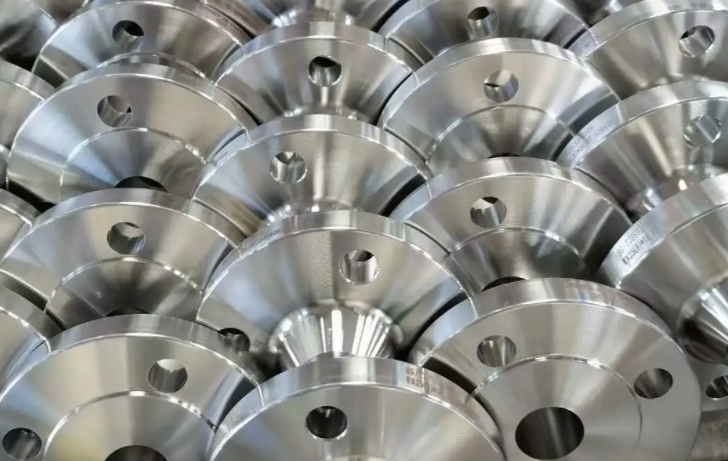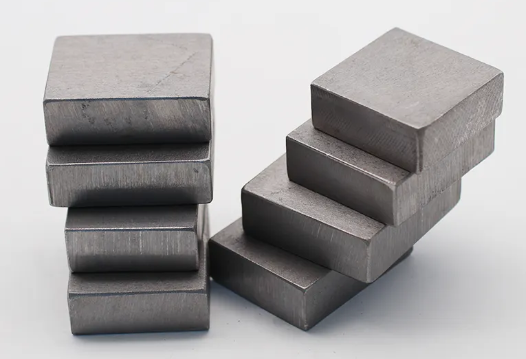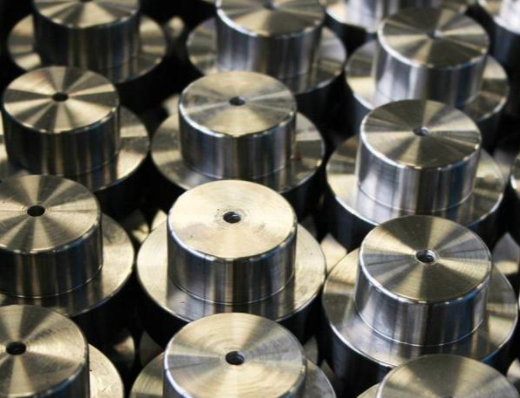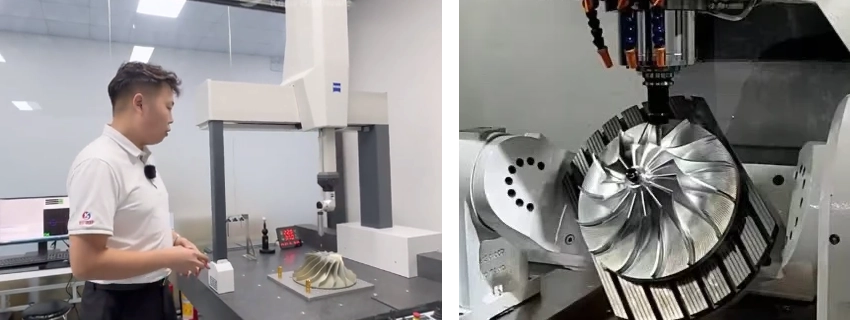High-temperature alloys, or superalloys, are critical for industries like aerospace, energy, and chemical processing, where extreme heat and corrosion resistance are non-negotiable. These materials—nickel-based, iron-based, and cobalt-based alloys—offer exceptional mechanical strength and durability but pose significant machining challenges due to their hardness, work-hardening tendencies, and heat resistance. Rapid tool wear, high cutting forces, and workpiece damage are common hurdles.
This guide provides a comprehensive roadmap for machining 30 high-temperature alloys, covering cutting tools, coatings, tool geometries, and cutting parameters for roughing, semi-finishing, and finishing. Whether you're a machinist or engineer, these insights will help you optimize your processes, extend tool life, and achieve precision results.
Why Machining High-Temperature Alloys is Challenging
Superalloys are engineered for extreme conditions, which makes them tough to machine. Key challenges include:
- High Hardness: Increases tool wear and cutting forces.
- Work-Hardening: Materials like Inconel harden during machining, accelerating tool degradation.
- Heat Resistance: Generates excessive heat, requiring advanced tool coatings like TiAlN or AlTiN.
- Corrosion Resistance: Alloys like Hastelloy resist chemicals but complicate machining due to their composition.
To overcome these, selecting the right tools and parameters is critical. This guide organizes recommendations by alloy type for clarity and practical application.

Nickel-Based Superalloys: Machining Best Practices
Nickel-based superalloys, such as Inconel and Hastelloy, dominate aerospace and nuclear applications due to their strength and corrosion resistance at high temperatures. Below are tailored machining strategies for 10 key nickel-based alloys.
1. Inconel 600
Applications: Furnace components, chemical processing equipment.
Challenges: Work-hardening and oxidation resistance increase tool wear.
Cutting Tools: Carbide, ceramic, or PCBN with TiAlN or TiSiN coatings.
Tool Geometry:
- Positive rake angle: 12-20°
- Relief angle: 8-12°
- Cutting edge radius: 0.02-0.1 mm
Cutting Parameters:
- Roughing:
- Cutting speed: 20-40 m/min
- Feed rate: 0.2-0.4 mm/rev
- Depth of cut: 2-6 mm
- Semi-Finishing:
- Cutting speed: 30-50 m/min
- Feed rate: 0.1-0.3 mm/rev
- Depth of cut: 1-3 mm
- Finishing:
- Cutting speed: 40-60 m/min
- Feed rate: 0.05-0.1 mm/rev
- Depth of cut: 0.2-1 mm
Pro Tip: Use sharp tools and moderate speeds to minimize work-hardening and extend tool life.
2. Inconel 625
Applications: Marine and chemical processing industries.
Challenges: High nickel content demands slower speeds to manage heat.
Cutting Tools: Carbide, ceramic, or PCBN with TiAlN or TiCN coatings.
Tool Geometry:
- Positive rake angle: 10-20°
- Relief angle: 8-12°
- Cutting edge radius: 0.03-0.1 mm
Cutting Parameters:
- Roughing:
- Cutting speed: 15-35 m/min
- Feed rate: 0.2-0.5 mm/rev
- Depth of cut: 2-5 mm
- Semi-Finishing:
- Cutting speed: 25-45 m/min
- Feed rate: 0.1-0.3 mm/rev
- Depth of cut: 1-3 mm
- Finishing:
- Cutting speed: 35-55 m/min
- Feed rate: 0.05-0.15 mm/rev
- Depth of cut: 0.2-1 mm
Pro Tip: Prioritize TiCN coatings for enhanced wear resistance in corrosive environments.
(Similar sections for Inconel 718, Hastelloy X, Hastelloy C276, Rene 41, Nimonic 80A, Nimonic 90, Waspaloy, and Alloy 718Plus follow the same structure, with specific parameters and tips adjusted for each alloy’s unique properties. To avoid redundancy, they are summarized below.)
Summary of Nickel-Based Alloys
| Alloy | Cutting Speed (m/min) | Feed Rate (mm/rev) | Depth of Cut (mm) | Best Coatings |
|---|---|---|---|---|
| Inconel 718 | 20-60 | 0.05-0.4 | 0.2-6 | TiAlN, AlTiN |
| Hastelloy X | 15-50 | 0.05-0.5 | 0.2-5 | TiAlN, TiCN |
| Rene 41 | 15-55 | 0.05-0.4 | 0.2-5 | TiAlN, AlTiN |
| Nimonic 80A | 15-50 | 0.05-0.4 | 0.2-5 | TiAlN, AlTiN |
| Waspaloy | 15-55 | 0.05-0.4 | 0.2-5 | TiAlN, AlTiN |
Key Insight: Nickel-based alloys require sharp tools and controlled speeds to manage heat and work-hardening. TiAlN and AlTiN coatings are ideal for most applications.

Iron-Based Superalloys: Machining Best Practices
Iron-based superalloys, like Incoloy and A-286, offer cost-effective strength for turbochargers and heat exchangers. While less extreme than nickel or cobalt alloys, their toughness still demands careful machining.
1. A-286 Alloy
Applications: Jet engine components, fasteners.
Challenges: Austenitic structure leads to work-hardening.
Cutting Tools: Carbide or ceramic with TiAlN or AlTiN coatings.
Tool Geometry:
- Positive rake angle: 10-15°
- Relief angle: 8-12°
- Cutting edge radius: 0.03-0.1 mm
Cutting Parameters:
- Roughing:
- Cutting speed: 15-30 m/min
- Feed rate: 0.2-0.5 mm/rev
- Depth of cut: 2-5 mm
- Semi-Finishing:
- Cutting speed: 25-40 m/min
- Feed rate: 0.1-0.3 mm/rev
- Depth of cut: 1-3 mm
- Finishing:
- Cutting speed: 35-50 m/min
- Feed rate: 0.05-0.1 mm/rev
- Depth of cut: 0.2-1 mm
Pro Tip: Use coolant to reduce heat and prevent surface damage during machining.
(Similar sections for Incoloy 800, Incoloy 825, Incoloy 901, Nitronic 60, Fe-Ni-Co Alloy, Hiperco 50, Hiperco 27, Pyromet 860, and Pyromet CTX-1 follow the same structure.)
Summary of Iron-Based Alloys
| Alloy | Cutting Speed (m/min) | Feed Rate (mm/rev) | Depth of Cut (mm) | Best Coatings |
|---|---|---|---|---|
| Incoloy 800 | 20-60 | 0.05-0.4 | 0.2-5 | TiAlN, AlTiN |
| Incoloy 825 | 15-50 | 0.05-0.4 | 0.2-5 | TiAlN, TiCN |
| Nitronic 60 | 15-50 | 0.05-0.4 | 0.2-5 | TiAlN, TiCN |
| Hiperco 50 | 20-60 | 0.05-0.4 | 0.2-5 | TiAlN, AlTiN |
| Pyromet 860 | 20-60 | 0.05-0.4 | 0.2-5 | TiAlN, AlTiN |
Key Insight: Iron-based alloys are more machinable than nickel or cobalt alloys but still require sharp tools and moderate speeds to prevent work-hardening.

Cobalt-Based Superalloys: Machining Best Practices
Cobalt-based superalloys, like Stellite and Haynes, excel in wear resistance and high-temperature strength, making them ideal for turbine vanes and valve components. Their hardness demands slow speeds and robust tooling.
1. Stellite 6
Applications: Valve seats, wear-resistant components.
Challenges: Extreme hardness accelerates tool wear.
Cutting Tools: Carbide or ceramic with TiAlN or AlTiN coatings.
Tool Geometry:
- Positive rake angle: 10-15°
- Relief angle: 8-12°
- Cutting edge radius: 0.03-0.1 mm
Cutting Parameters:
- Roughing:
- Cutting speed: 10-20 m/min
- Feed rate: 0.15-0.3 mm/rev
- Depth of cut: 2-4 mm
- Semi-Finishing:
- Cutting speed: 15-25 m/min
- Feed rate: 0.1-0.25 mm/rev
- Depth of cut: 1-2 mm
- Finishing:
- Cutting speed: 20-30 m/min
- Feed rate: 0.05-0.1 mm/rev
- Depth of cut: 0.1-1 mm
Pro Tip: Use ceramic tools for high hardness and slow speeds to prevent chipping.
(Similar sections for Stellite 21, Ultimet, Haynes 25, Haynes 188, MP35N, L-605, T-400, Elgiloy, and Tribaloy T-800 follow the same structure.)
Summary of Cobalt-Based Alloys
| Alloy | Cutting Speed (m/min) | Feed Rate (mm/rev) | Depth of Cut (mm) | Best Coatings |
|---|---|---|---|---|
| Stellite 21 | 10-30 | 0.05-0.3 | 0.1-4 | TiAlN, TiCN |
| Ultimet | 10-30 | 0.05-0.3 | 0.1-4 | TiAlN, AlTiN |
| Haynes 25 | 10-30 | 0.05-0.3 | 0.1-4 | TiAlN, AlTiN |
| MP35N | 10-35 | 0.05-0.3 | 0.1-4 | TiAlN, AlTiN |
| Tribaloy T-800 | 10-35 | 0.05-0.3 | 0.1-4 | TiAlN, AlTiN |
Key Insight: Cobalt-based alloys require the slowest speeds and robust coatings to manage their extreme hardness and wear resistance.
General Tips for Machining High Temperature Alloys
- Use Coolant Strategically: Flood cooling reduces heat but avoid thermal shock on tools.
- Monitor Tool Wear: Inspect tools frequently to prevent workpiece damage.
- Optimize Feed Rates: Lower feed rates for finishing improve surface quality.
- Select Advanced Coatings: TiAlN, AlTiN, and TiCN enhance tool life in high-heat conditions.
- Test Parameters: Start with conservative settings and adjust based on performance.

KeSu High Temperature Alloy Machining Service
The complexity of high temperature alloys demands exceptional processing. If you are seeking a partner capable of working with these special materials and ensuring the performance and reliability of your final products, we possess the capabilities you need.
With extensive experience and precision equipment in the field of high temperature alloys processing, KeSu provides stable and reliable manufacturing services. We meet the stringent standards for components operating in extreme high-temperature environments across industries such as aerospace, energy, and petrochemicals. We focus on detail, ensuring every product meets design requirements.
Conclusion
Machining high temperature alloys like Inconel, Incoloy, and Stellite requires precision, robust tools, and optimized parameters. By following the recommendations in this guide, you can minimize tool wear, reduce costs, and achieve high-quality finishes. Bookmark this resource as your go-to reference for mastering superalloy machining.
